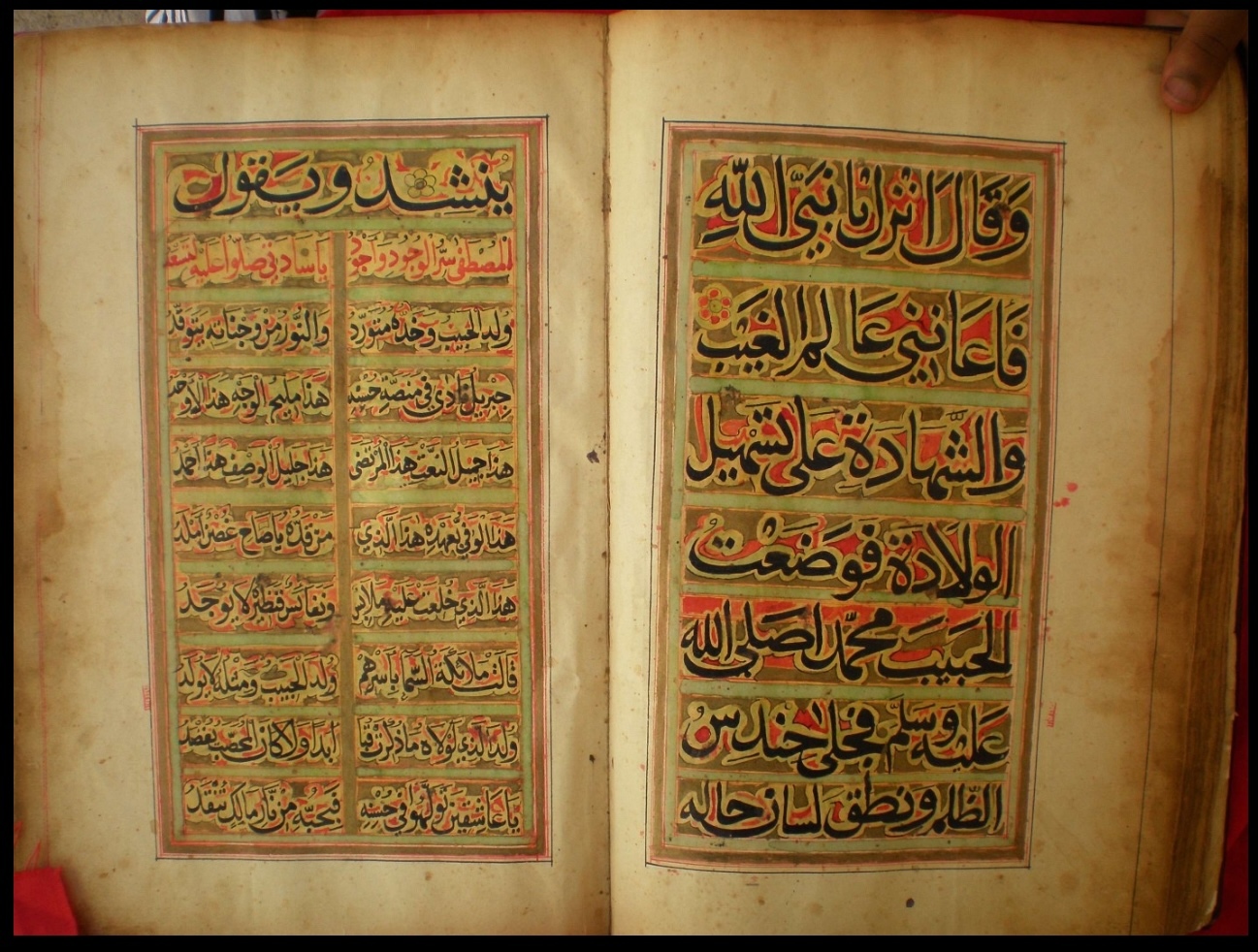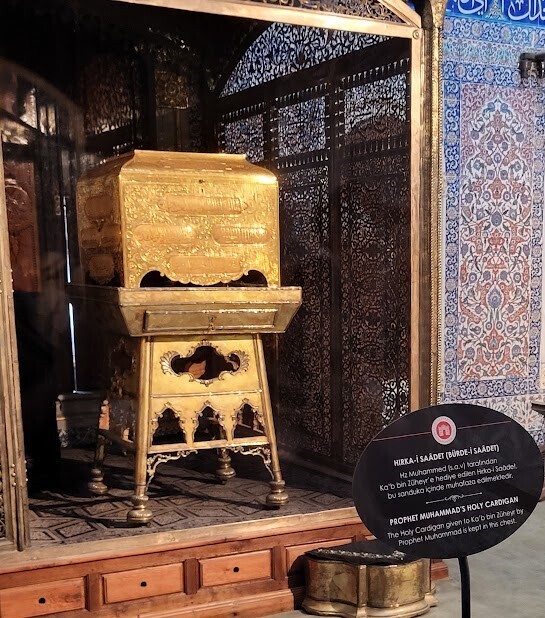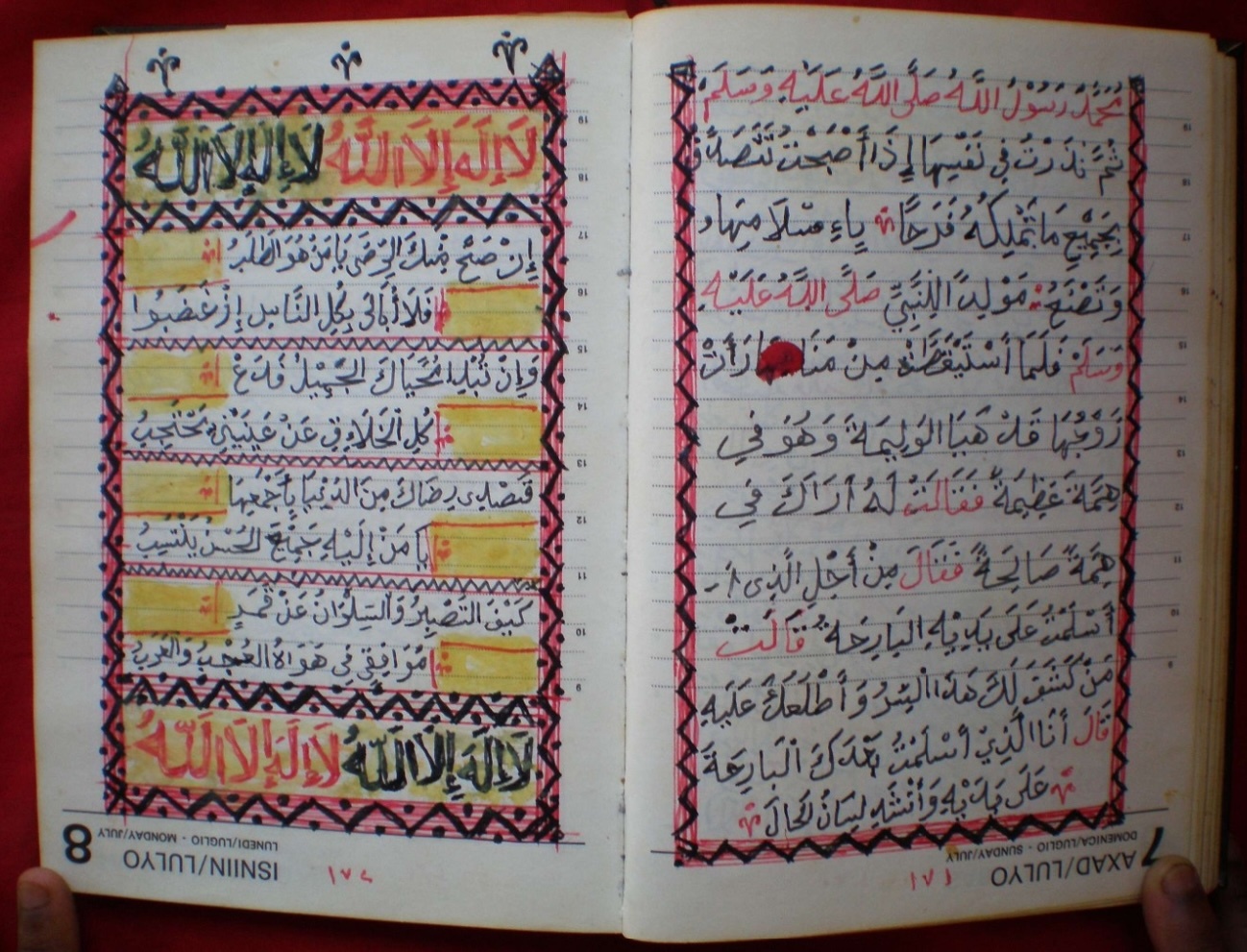The Prophet’s Birthday And Books For Celebrating It
The Prophet’s Birthday and Books for Celebrating It
This story is part of an ongoing series of editorials in which HMML curators and catalogers examine how specific themes appear across HMML’s digital collections. From Eastern Christian, Dr. Josh Mugler has this story about Celebrations.
In many Muslim communities, the annual celebration of the Prophet Muḥammad’s birthday is one of the most festive occasions of the year. Known as Mawlid or Mawlid al-Nabī, the celebration is often marked by feasting, fasting, the recitation of poetry in honor of the Prophet, and religious music. The practice and characteristics of the celebration are the subject of debate—with certain approaches rejected by some traditionalist schools of thought—but Mawlid is widely celebrated and is a national holiday in most countries with large Muslim populations. It is marked on the 12th of Rabīʻ al-Awwal on the Islamic calendar and, like all Islamic dates, its correspondence with the Gregorian calendar changes each year. This year, Mawlid occurs on September 4 or 5.

Mawlid celebrations often include the communal reading or singing of poems and other texts telling the story of the Prophet’s birth, a practice that typically requires books—and, historically, such books have often been manuscripts. HMML’s collections include dozens of texts recounting the nativity of the Prophet and the miraculous events that accompanied it. These manuscripts include works written in Arabic, Turkish, Bosnian, and Kurdish.
In Harar and the surrounding region of eastern Ethiopia, a particular set of texts has become the standard compilation for communal reading at Mawlid celebrations. This compilation exists in dozens of manuscript copies as well as several printed editions and is generally known by the collective title of Mawlid Sharaf al-ʻĀlamīn (“Nativity of the Eminence of the Worlds”).
HMML has digitized 30 copies of Mawlid Sharaf al-ʻĀlamīn: 22 at a museum in Harar, seven in Ethiopia’s capital city of Addis Ababa, and one in HMML’s own library in Minnesota. The latter (HMML 00568) was donated to HMML in 2021 by Charles Eilers, along with several other manuscripts from eastern Ethiopia. One of the copies digitized in Harar (SHCM 00022) was printed by lithography in Addis Ababa in 1966 CE, but the 29 others are manuscripts.

Two main texts form the primary structure of the Mawlid Sharaf al-ʻĀlamīn compilation. The first is the famous poem al-Burdah (“The Mantle”), written in the 13th century CE by the Egyptian Sufi poet Sharaf al-Dīn Muḥammad al-Būṣīrī. The poet wrote this work in praise of the Prophet while suffering from a severe illness; he dreamed that the Prophet spread his mantle or cloak over him, then he awoke fully recovered.
This story of healing suggested the beneficial spiritual power of the poem for those who would recite, copy, comment on, or revise and expand upon it, and countless pious Muslims did so throughout the subsequent centuries. The Harar compilation sometimes includes al-Būṣīrī’s original version of the poem, but more often it contains the expanded form written in the 14th century CE by Shams al-Dīn Muḥammad al-Fayyūmī, who added three of his own lines after every two lines of the original poem (a literary form known in Arabic as Takhmīs).

The second central text of the compilation is ʻUnwān al-Sharīf (“Title of the Eminent”), an account of the Prophet’s birth authored by ʻAlī ibn Nāṣir al-Ḥijāzī (1437–1509 CE). The two central texts are accompanied by a variety of shorter poems, prayers, and other devotional works, which vary according to the individual interests of the scribes and their local audiences. The main texts are usually written in Arabic, but additional texts often include works in the local language of Harari as well.
The oldest dated copy of the Harar Mawlid compilation in HMML’s collections is from 1729 CE (EMIP 01528), but the tradition is alive and well, as indicated by the presence of a manuscript copy from 1997 CE (EMIP 01758). In addition, three recent copies of Mawlid Sharaf al-ʻĀlamīn were written on the blank, upside-down pages of daily calendars from the 1970s CE; two of the calendars were printed in Ethiopia (EMIP 01437, EMIP 01441) and one in Somalia (EMIP 01440).

The Harar compilation is just one example of the importance of manuscripts and other books in Mawlid celebrations across the world of Islam, an example that is especially visible in HMML’s global collections. These books, which continue to be produced in very recent decades, are central to the celebration of this important festival and are adapted to the specific needs of each community. In Harar and across the Islamic world, manuscripts tell the story of the Prophet’s birth.
Further Reading:
Gori, Alessandro. “Texts in the Mawlid Collection in Harar: Some First Critical Observations.” African Study Monographs, Suppl. 41, 2010, 51-62.




